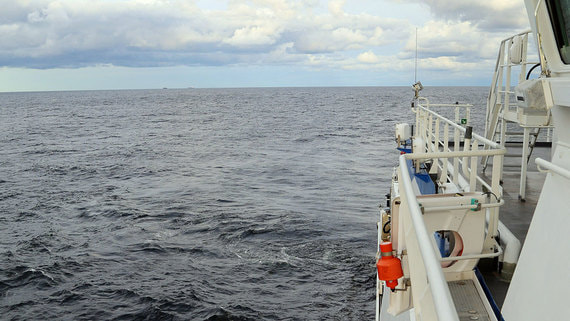The Balticconnector gas pipeline between Estonia and Finland could have been damaged by saboteurs
[ad_1]

Finnish authorities suspect that the Balticconnector gas pipeline between Estonia and Finland and the Balticconnector telecommunications cable may have been damaged due to sabotage. Finnish Prime Minister Petteri Orpo expressed such concerns at a briefing on October 10. “Border and coast guards have located the leak. The damage is located in the exclusive economic zone of Finland. Finnish authorities have launched an investigation. We also received information about a faulty data cable. It can be assumed with a high degree of probability that this damage is located in the economic zone of Estonia,” Orpo said.
Earlier, Finnish President Sauli Niinist also acknowledged the leak, emphasizing that it was caused by “external activity.” The President has already reported the incident to NATO Secretary General Jens Stoltenberg, who promised the alliance’s assistance in the investigation.
Balticconnector is an offshore gas connection pipeline (interconnector) between Finland and Estonia with a length of about 80 km and a capacity of 2.6 billion cubic meters. m per year, passes along the bottom of the Gulf of Finland and partially the territories of both countries. The pipeline was put into operation in 2019–2020. It allows Finland to receive gas in transit through Estonia from the Incukalns underground storage facility in Latvia and the liquefied natural gas (LNG) terminal in Klaipeda, Lithuania. Estonia, in turn, has the opportunity to receive fuel from the Exemplar floating LNG terminal located in Finland in the port of Inkoo (began operation in 2023).
Estonian and Finnish seismological stations did not record any explosion-like events in the Gulf of Finland during a leak on the gas pipeline connecting the countries, leading seismologist of the Estonian Geological Center Heidi Soosalu told the ERR state television and radio portal. “Based on the seismic data, no explosions were detected,” she said. “At least based on seismic data, no signs of this kind of activity have been detected.” If there was an explosion, its power was below the detection threshold.”
But TASS, citing the Norwegian publication Verdens gang, reported that Norwegian seismologists recorded a shaking on October 8 near a gas pipeline in the Gulf of Finland.
The 77-kilometer pipeline was closed on both sides on October 8, when Finnish and Estonian operators recorded a drop in pressure in the system. According to Finnish operator Gasgrid, eliminating the faulty pipeline could take months.
Until recently, the most famous sabotage on pipelines was the explosion of the trans-Baltic pipelines Nord Stream 1 and Nord Stream 2 in 2022. These terrorist attacks stopped the flow of Russian gas to Germany. The culprits of the explosions have not yet been identified; various unofficial versions place responsibility, for example, on the United States, Ukraine and Russia. Russian President Vladimir Putin, answering a question about the investigation into the terrorist attacks on Nord Stream, on October 5 at a meeting of the Valdai discussion club, noted that there were no results “and, apparently, there will not be.” “When answering the question of who is to blame, you always need to answer the question of who is interested in this,” he added. – Of course, the American supplier of energy resources to the European market is interested. The Americans have wanted this for a long time, and they achieved it, but by whose hands it no longer matters.”
An inadequate reaction and a “Russian witch hunt” in connection with the accident without presenting significant evidence is possible, but more likely on the part of Estonia than of Finland, believes Alexander Nosovich, editor-in-chief of the analytical portal Rubaltic.Ru. He recalls that in September, Estonian Prime Minister Kaja Kallas, who called for the economic isolation of Russia, was involved in a scandal with her husband’s company, which collaborated with the Russian side. Callas managed to retain her post, but now, Nosovich explains, she needs to rehabilitate herself in the eyes of the Western public. However, inappropriate behavior is also possible in Helsinki, since with Finland’s accession to NATO, its eastern policy changed from neutral to “the behavior model of an alliance neophyte,” the expert summarizes.
Leading analyst of the National Energy Security Fund Igor Yushkov notes that gas has recently been supplied through the pipeline in the direction of Estonia. Finland supplies the Baltics with part of the volumes of gasified Russian LNG, which it buys from the Cryogas-Vysotsk project (a joint venture of Novatek and Gazprombank) and from the Gazprom plant near the Portovaya compressor station in the Leningrad region.
The expert recalls that Balticconnector was built with the support of the EU “to increase interconnections between European countries and develop the EU gas market.” According to Yushkov, Balticconnector was underutilized before the accident, as gas consumption in Estonia is historically low, and neighboring Latvia mainly receives fuel from the LNG terminal in Lithuania. Finland meets its gas needs through a floating LNG terminal, the analyst notes.
Kirill Rodionov, an expert at the Institute for the Development of Fuel and Energy Technologies, explains that the Exemplar terminal allows Finland to receive up to 5 billion cubic meters. m of gas per year with average consumption in 2018–2022. in 1.9 billion cubic meters. m (in 2022 it decreased to 1.1 billion cubic meters). Another source of imports is the small Hamina terminal with a capacity of 1.3 million cubic meters. m of gas per year, the expert adds.
[ad_2]
Source link








